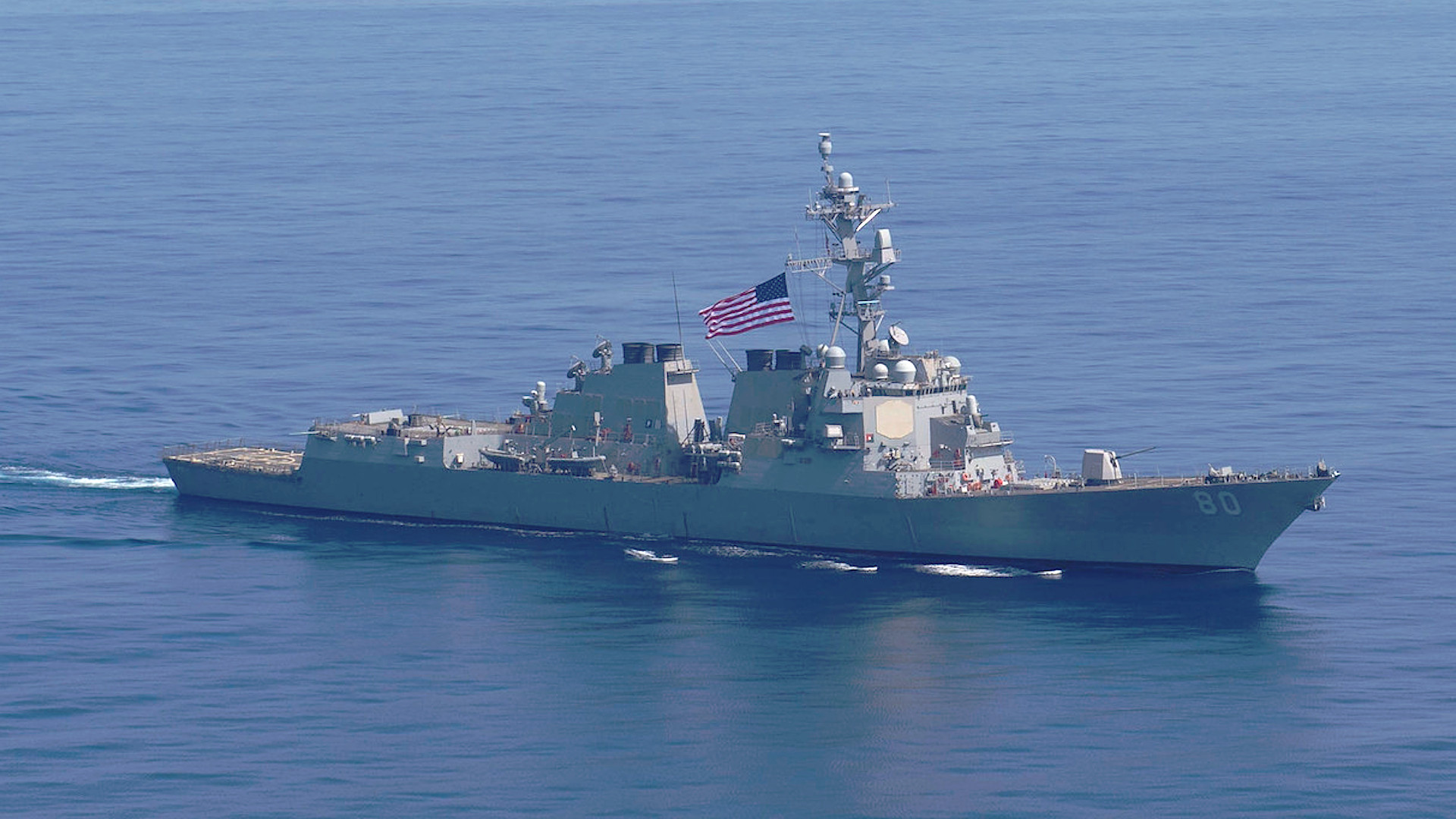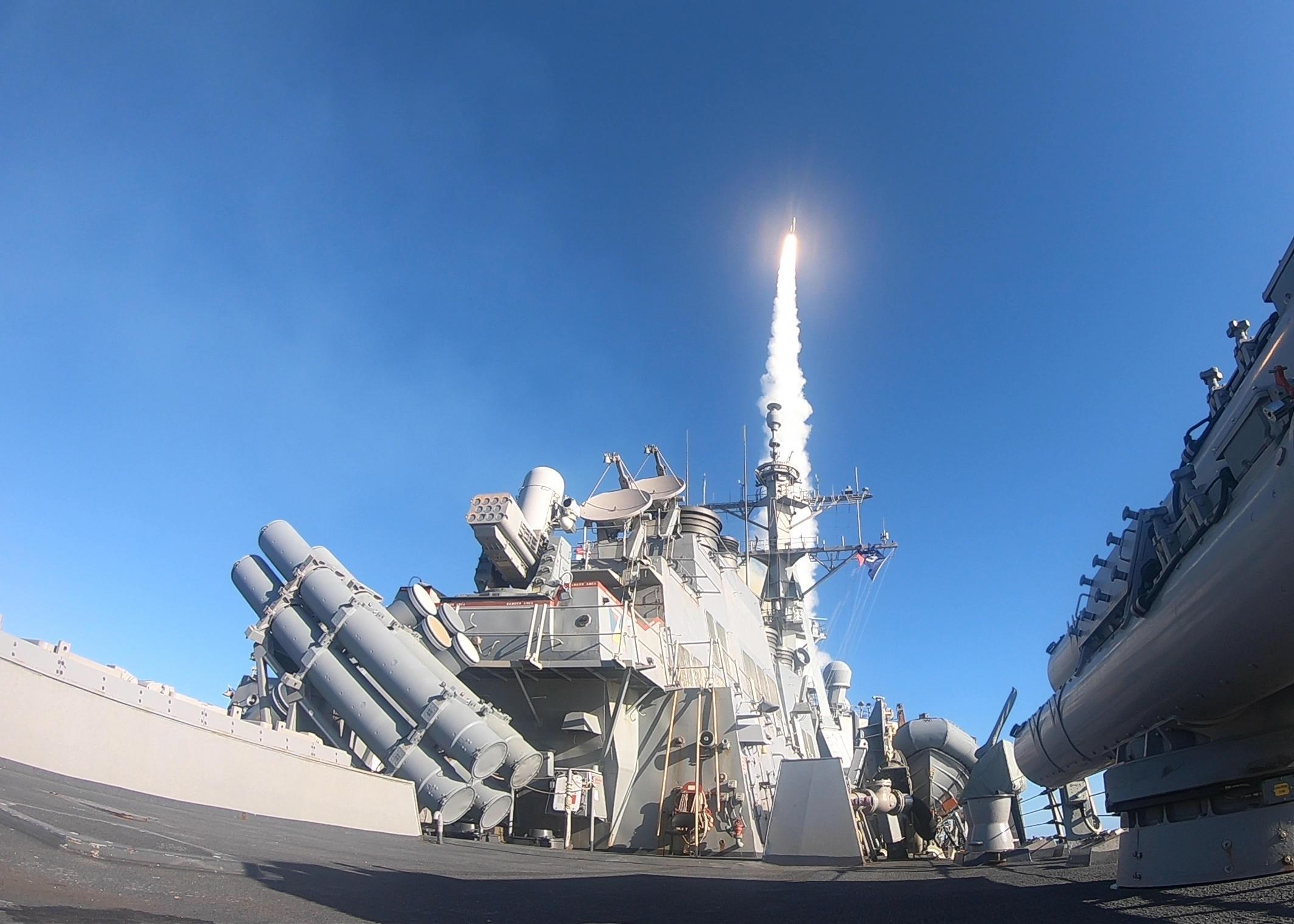Turkish authorities have confirmed that two U.S. Navy warships are set to head into the Black Sea soon. There is no official word yet on which vessels will heading into that body of water, but there are reports that the Arleigh Burke class destroyers USS Donald Cook and USS Roosevelt are the ships in question. All of this comes as the Russian military continues to pour forces, including additional naval assets, into the southwestern portion of the country along the border with Ukraine, fueling fears that a new crisis between Moscow and Kyiv, or worse, might be about to erupt.
Turkey’s Foreign Ministry disclosed today that it had received a formal notice about the impending transit of the two warships from the Mediterranean Sea into the Black Sea via the Bosporus and Dardanelles straits, both of which are Turkish territorial waters. Under the 1936 Montreux Convention, countries that do not have a Black Sea coastline must give advance notice about the deployment of naval vessels in and out of that body of water. That agreement also places restrictions on how many warships countries outside of the region can have there at once, via limits on the total displaced tonnage of the vessels, and how long these deployments can last.

“A notice was sent to us 15 days ago via diplomatic channels that two U.S. warships would pass to the Black Sea in line with the Montreux Convention,” the Turkish Foreign Ministry said on Apr. 9, 2021, according to Reuters. “The ships will remain in the Black Sea until May 4.”
CNN
had reported on Apr. 8 that the Navy was considering sending warships into the Black Sea sometime in the coming weeks.
The U.S. Navy has declined to confirm what warships are now headed into the Black Sea or what they will do once they arrive there. “U.S. Navy ships maintain a regular presence in the Black Sea and abide by the Montreux Convention. As a matter of policy, we do not discuss future operations or ship schedules,” Navy Lieutenant Commander Matthew Comer, a spokesperson for U.S. Naval Forces Europe-Africa (NAVFOREUR-AF) and U.S. 6th Fleet, told The War Zone.
Turkish television channel NTV
did report, citing sources within the country’s Foreign Ministry, that the USS Donald Cook and USS Roosevelt were the ships now bound for the Black Sea. These two destroyers are both forward-deployed in Europe, operating from Naval Station Rota in Spain. They have each deployed to the Black Sea on multiple occasions in the past, with the Donald Cook having been in that body of water as recently as February.
If it is true that these are the ships the U.S. Navy is sending, it’s hard not to see their return in the current context as, at least in part, a signal aimed at Russia. Having a pair of Burkes in the Black Sea would offer additional assets to help monitor Russian activity and be in a position to better respond to various contingencies if they were to suddenly emerge.
At the same time, it’s worth pointing that any major conflict involving both Russia and the United States in this region would turn the Black Sea into an anti-ship missile shooting gallery, where Russian forces would have a major advantage, at least initially. Russia’s anti-ship, as well as other anti-access and aerial denial capabilities, in the region have grown since it seized the Crimean Peninsula from Ukraine in 2014. The Kremlin has since deployed significant numbers of additional combat aircraft, as well as surface-to-air and ground-based anti-ship missile units to bases there. This is in addition to the modernized Black Sea Fleet that largely calls Crimea home. These vessels are packed with a wide array of anti-ship missiles, too. Its Kilo class diesel-electric submarines are also a major threat to American warships in the enclosed body of water.
When Donald Cook, together with the USS Porter, another Arleigh Burke class destroyer forward-deployed in Spain, arrived in the Black Sea earlier this year, they were greeted by an aggressive Russian response. This included being buzzed by an Su-24 Fencer combat jet and nearby drills involving Su-30SM Flankers armed with anti-ship missiles and coastal defense missile batteries in Crimea.


This reality is almost certainly one of the reasons why Navy destroyers based in Spain have been equipped with specialized electronic warfare systems that are, at least in part, designed to defend against anti-ship missiles. You can read more about the AN/SLQ-62 Transportable Electronic Warfare Module-Speed To Fleet (TEWM-STF) system here. These ships have other special modifications, as well, including the SeaRAM point defense systems.
It’s also interesting to note that 15 days ago, when Turkey said the U.S. government formally notified it of its latest plans to send warships into the Black Sea, would be March 25, two days after the conclusion of a major Russian military exercise in the southwestern portion of the country. Significant numbers of troops that had taken part in those drills then stayed in the area afterward, reportedly drawing the attention and concern of U.S. officials.

In addition, On March 26, four Ukrainian soldiers were killed in a recent spike in fighting between that country’s military and separatists who occupy areas in the eastern portion of the country that is known collectively as the Donbass. Those groups, who have been fighting the government in Kyiv since 2014, have significant ties to Russian intelligence agencies and receive direct support from actual elements of the Russian military.
By March 27, there were clear indications that Russia was conducting a major military buildup along its borders with Ukraine. Russian authorities have since confirmed these deployments, which are still ongoing, though they claim they are part of series of readiness drills across the country.
On March 30, The New York Times reported that U.S. European Command (EUCOM) had raised an internal alert level regarding the security situation in Ukraine from “possible crisis” to “potential imminent crisis.” The latter level was reported to be the most serious on the watch list’s scale.
“The fact that they [the Russians] haven’t been transparent is only causing more instability, more insecurity” Pentagon Press Secretary John Kirby said today. “We’re watching this very very carefully.”
“It is a big build-up… the biggest one that we’ve seen since 2014,” he continued. “We don’t think that the Russian have been totally transparent about what they’re doing.”
What exactly might be driving the current Russian military buildup near Ukraine remains murky, whether or not an actual escalation in the conflict between Russia and Ukraine is indeed in the offing. A water crisis in Crimea, as well as domestic political issues in Russia, especially surrounding the imprisonment and worryingly poor health of Alexei Navalny, a prominent critic of Russian President Vladimir Putin and anti-corruption activist, appear to be among the factors.
The impending arrival of U.S. Navy warships in the Black Sea is all but certain to draw a response of some kind from the Russian government. Russian officials have already begun to blame NATO, as well as Ukraine, for the spike in tensions in the region. This kind of rhetoric reflects misinformation and disinformation tactics the Kremlin has regularly employed in the past to deflect and distract from its own malign activities.
How all of this might impact the continued evolution of the situation on the Ukraine-Russia border remains to be seen.
Contact the author: joe@thedrive.com
